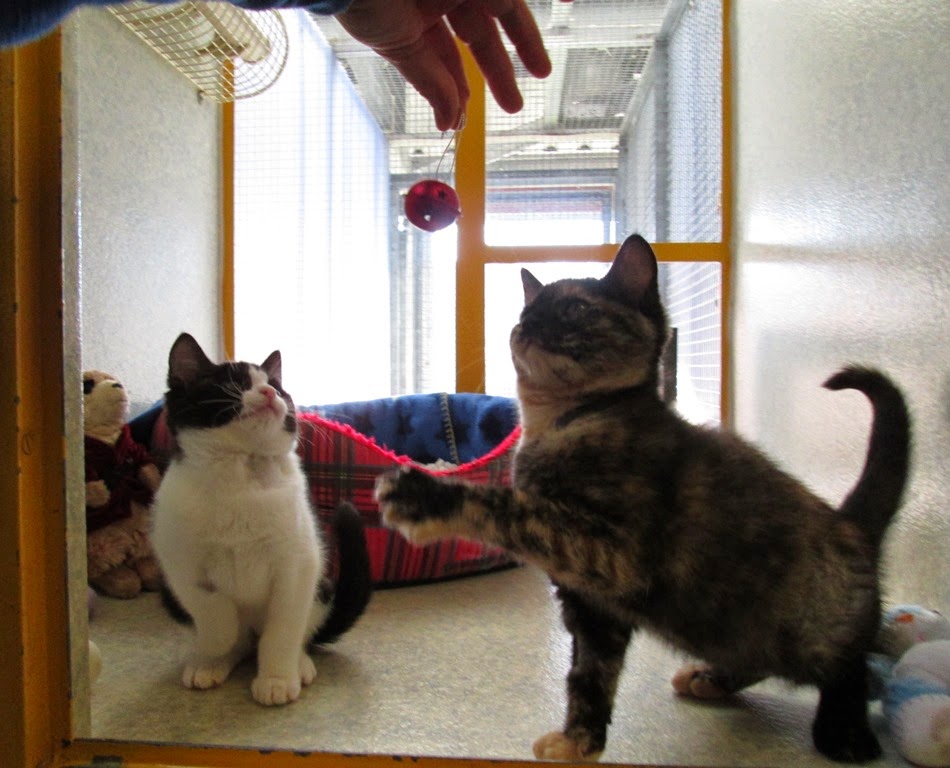Why should
cats be microchipped?
Microchipping
is the most effective way of identifying a lost pet. Microchips don’t come off,
or put cats at risk of collar-related injuries. They can also assist with
ownership disputes – although please not that a microchip is not absolute proof
of ownership, but may be presented as evidence. Each microchip has a unique 15
digit number linked to a database holding your contact details, allowing you to
be quickly traced if your cat strays and is scanned for a microchip.
The
Procedure
A microchip
is slightly smaller than a grain of rice and is inserted under the cat’s skin
between the shoulder blades with a dedicated device known as an implanter. The
procedure is very simple and is no more painful than an injection. Your cat
will not be aware of the microchip’s presence once it has been inserted.
How much
will it cost?
You can
expect to pay around £20 to £30 for the procedure.
Who can microchip
my cat?
Vets, local
authorities and trained and insured members of animal welfare organisations may
offer microchipping.
When should
I have my cat microchipped?
There is no
minimum age, but it will depend on the preference of the trained implanter.
Many cats are microchipped at the time of first or second vaccination but it
can also be done at any time after this. It is ideal to get your cat microchipped
before letting it outside for the first time.
How will I
know my cat’s details have been registered following microchipping?
You will be
sent registration documents following the microchipping procedure, usually
within a couple of weeks of it taking place. If you don’t receive these,
double-check with the person who microchipped your cat. Keep your registration
documents and cat’s microchip number safe.
How do I
check my cat’s microchip?
The person
implanting the chip will place a hand-held scanner over your cat to check the
implantation has been successful. Upon detection of the microchip the scanner
will display the microchip’s unique number. Some owners ask to have their cat’s
microchip scanned and the microchip checked while having its annual check-up at
the vets. While movement of chips or chip failure are extremely rare, it is
peace of mind to know the microchip is still working. Microchips are not
programmed with global positioning satellite technology so you cannot track
your cat’s whereabouts.
What if I
lose my cat?
If you do
lose your cat, it is important to double-check with the database that provides
the aftercare service for your cat, to ensure your contact details are correct
and up to date. If your lost cat is found and taken to a vet, local authority
or animal welfare organisation to be scanned, you will be contacted and advised
of your cat’s whereabouts.
What if I
move home or change phone numbers?
Remember
that you should update your cat’s microchip details if you move home or change
any of your details – this is essential to ensure you can be traced should your
cat stray. This is especially important if you have brought your cat into the UK through the Pet Travel Scheme or through quarantine. If your cats strays with your details still registered overseas and his legal entry to UK cannot be ascertained your cat face a further period in quarantine or even euthanasia by the authorities if he becomes lost, you cannot be traced and his legal entry to the UK cannot be ascertained. NB Simply putting your cat through the pet travel scheme or quarantine does not automatically update your records, so it is important that you remember to do this.In the UK, you can update your cat's registered details by contacting your exisiting UK database company, or Petlog - on 0844 4633 999 or via www.petlog.org.uk - or Anibase - on 01904 487 600 or via www.anibase.com
What if I want to rehome my cat?
Contact your microchip database as transfer of ownership documents should be completed. If your cat is relinquished to a rehoming organisation such as Cats Protection, the organisation will ask for a signed copy of your cat’s microchip registration documents authorising transfer of registered ownership details, or may ask you to complete an alternative form.
Microchip
cat flaps
If your cat
has been microchipped, you may want to consider installing a microchip cat flap
in your home. These identify cats trying to enter your home by scanning their
microchips and will only allow entry to those whose microchip number you have programmed
in to the cat flap.
Cats
Protection and microchipping
All cats and
kittens over 12 weeks of age adopted from Cats Protection will already have a
microchip as part of the charity’s Minimum Veterinary Standards. We will help
you register your contact details with the microchip database at the time of
adoption. (Source: Cats Protection) 





.JPG)





